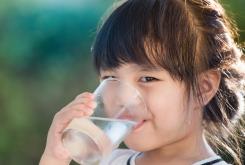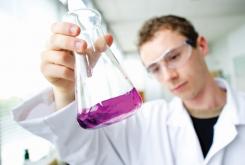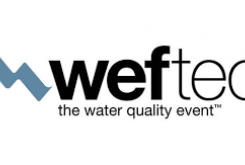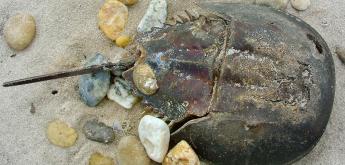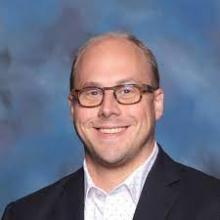How Water Reuse Can Fight Back Against Global Scarcity
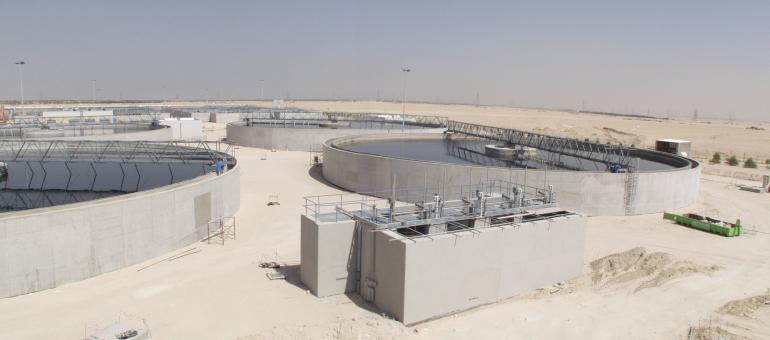
Water scarcity has been a global issue for years, and the crisis is quickly worsening. This incredible resource isn't just essential for sustaining humans with hydration — it supports agriculture, industry, and the environment. Situations around the world approach crisis levels. In Mexico, roughly 60% of the country is experiencing moderate to exceptional drought, and 90% of Mexico City is in severe drought according to a government report in February. Experts theorize that the city may run out of water in months.
This is not an isolated issue as similar scenarios are repeated in cities and communities all over the world. The World Wildlife Federation reports that 66% of the global population is likely to face water scarcity by next year and that water scarcity threatens $58 trillion in economic value annually.
On this World Water Day, we need to understand how urgent the situation is and start acting. This year’s theme is “Water for Peace,” and water can be the key to unlocking stability and prosperity in the world, especially in the face of growing scarcity. There’s no better driver than committing to an ecological transformation to make this planet a better place for all. We already have the technology, knowledge, and experience to use water reuse as a tool to fight back against this growing threat.
Beyond climate change: Causes of water scarcity
The endangerment of water is more complex than you may think. Climate change certainly plays a prominent role — the United Nations says every 1°C increase caused by global warming will reduce renewable water resources by 20% — but that’s not the whole story.
There are several other causes impacting water scarcity and adequate freshwater supplies, like population growth, urbanization, and increased demand from agriculture and industry. According to the Organisation for Economic Co-operation and Development, agriculture, which feeds us, accounts for 70% of water consumption globally. In many regions, groundwater is being depleted faster than it can be replenished, leading to shortages. Pollution and contamination of water sources also contribute to the problem.
How the continuum of water recycling helps us fight back
Water reuse on a large scale can help preserve our natural water resources, create solutions that support the local environment, and generate a sustainable freshwater supply.
Reuse is a tool that follows a continuum that allows communities and organizations to plan the advancement of their infrastructure methodically and build a foundation that can be expanded as the local need dictates to improve their water availability well into the future. In essence all water is recycled but the quality of that water and treatment level allow for water to be brought back for various different uses. With the right foundation, one could treat wastewater for non-potable recycling today but could adjust their treatment flowsheets in later years to begin recycling for direct potable reuse.
Veolia | Water Tech creates innovative solutions using a core set of technologies — like membrane bioreactors (MBRs), ultrafiltration (UF), nanofiltration (NF), reverse osmosis (RO), activated carbon, ozone and biofiltration, and ultraviolet disinfection (UV) — to support its clients at every stage of the continuum.
Let’s dig into the four stages of the continuum and understand how Veolia has helped with each of them.
Pollution abatement and discharge to sensitive environments
The Broad Run Water Reclamation Facility was constructed to provide additional wastewater treatment capacity for Loudoun County and can treat 11 million gallons per day (MGD) of wastewater. It incorporates an enhanced nutrient-removal process, coagulant addition to supplement biological phosphorus removal, membrane bioreactor, activated carbon post-treatment, and ultraviolet disinfection to achieve permit limits. Effluent from the facility flows into Broad Run, a tributary of the Potomac River which eventually flows into Chesapeake Bay. Its location within the Chesapeake Bay Watershed and its proximity to a downstream drinking water intake require the effluent from the facility to meet very stringent discharge requirements. The system also allows wastewater to be reclaimed by connecting local commercial customers who use the water for cooling, irrigation, sprinkler fire suppression, and toilet flushing.
Another example of Veolia’s solutions which reinforce our commitment to the environment was seen in the recent California wildfires. The Woolsey wildfire caused mass destruction as it ripped through Malibu, California, burning nearly 97,000 acres and destroying over 1,600 structures, including a wastewater treatment plant servicing a rehabilitation center in the City of Malibu. With the treatment plant rendered non-functional, the rehabilitation center was unable to operate after the fire subsided. It needed a temporary wastewater treatment solution while a permanent replacement plant was designed and built.
Veolia delivered a 26,000-gallon-per-day mobile membrane bioreactor (MBR) system incorporating ZeeWeed* ultrafiltration membranes. This compact, ready-to-operate system treats wastewater biologically and uses immersed hollow-fiber membranes to filter out suspended solids, requiring less energy and chemicals than conventional plants. Veolia's mobile MBR was integrated seamlessly with the existing infrastructure and was approved within 60 days, meeting all required discharge limits to allow the residents to return quickly.
Advanced pollution control and recycling
The Federated Co-operatives Limited’s Co-op Refinery Complex (CRC) in Regina, Saskatchewan, was one of the largest freshwater consumers in the city. The oil refinery embraced conservation and committed to a $200 million environmental megaproject amid a 30% operation expansion. It needed an advanced wastewater treatment facility that could remove solids, oils, phenols, nitrogen compounds, organics, and other contaminants. The facility also wanted to demineralize treated water for use in steam production, eliminate the release of volatile organic compounds from wastewater ponds, and increase/accelerate use of municipally treated wastewater.
Veolia designed, built, and commissioned portions of CRC’s five-stage wastewater treatment solution using a combination of ZeeWeed* MBR and high-pH RO Optimized Pretreatment and Unique Separation (OPUS®) technologies. Veolia’s solution eliminated all wastewater effluent, recovering most for the refinery’s steam plant, and allowed CRC to reduce its freshwater needs by 28%, the equivalent usage of about 3,100 Regina households annually. CRC also significantly shrunk its environmental footprint by reducing emissions from volatile organics in its wastewater ponds. The results were so impactful that Global Water Intelligence named the project its Industrial Water Project of the Year in 2017.
Non-potable recycling
Kuwait’s location in the Middle East, the world's most water-scarce region, creates challenges in coping with water stress and meeting the demands of a population that grew by more than 1 million people from 2011 to 2021. The country has no permanent rivers or lakes, and its limited groundwater supplies are deteriorating in quantity and quality due to continuous pumping that exceeds recharge rates, so it needed to develop new water sources to diversify from a dependence on desalination.
A consortium that includes Veolia was established in 2001 to design, build, own, operate, and maintain a nearly 100-million-gallon-per-day (MGD) Sulaibiya wastewater treatment plant. Over the years since the initial start-up, the facility has expanded to process an additional 60 MGD, making the total treatment capacity 160 MGD. Veolia leveraged a combination of UF and RO membranes to support one of the world’s largest membrane-based water reuse project. The facility’s reclaimed water supports all of Kuwait’s dairy and vegetable growing operations. The facility serves as a benchmark for water reuse in the Middle East.
Freshwater augmentation
The City of Santa Monica’s Sustainable Water Infrastructure Project (SWIP) sought to establish a secure and drought-resilient water supply for the city, setting an unprecedented standard in sustainable water infrastructure. As a coastal city west of Los Angeles, Santa Monica is uniquely positioned to address two problems at once: cater to the daily water needs of over 93,000 residents and 2,700 commercial customers and augment the local groundwater supply.
Veolia helped build a literal groundbreaking solution — SWIP is California's first underground advanced wastewater treatment facility — using a LEAPmbr* system. The MBR effluent is further treated with cartridge filtration, RO, ultraviolet and free chlorine disinfection. SWIP has three innovative project elements that work together to recycle wastewater and capture stormwater to produce up to 1,690 acre-feet per year of advanced treated recycled water, or roughly 10% of Santa Monica’s water supply, to reduce its reliance on imported water supplies.
How Veolia’s work combats global scarcity
Innovative technologies and solutions to reusing and treating water are at the heart of what our teams do. We can meet the needs of your industry, region, and community by creating sustainable outcomes that optimize the use of our natural water resources and reduce our strain on the environment.
Decisions made today can significantly impact how a community is able to travel up and down the water reuse continuum. As a community, we need to invest more in sustainable solutions, move forward regulations and prioritize our water resources.
Contact our team of experts to find solutions to your toughest water challenges.

